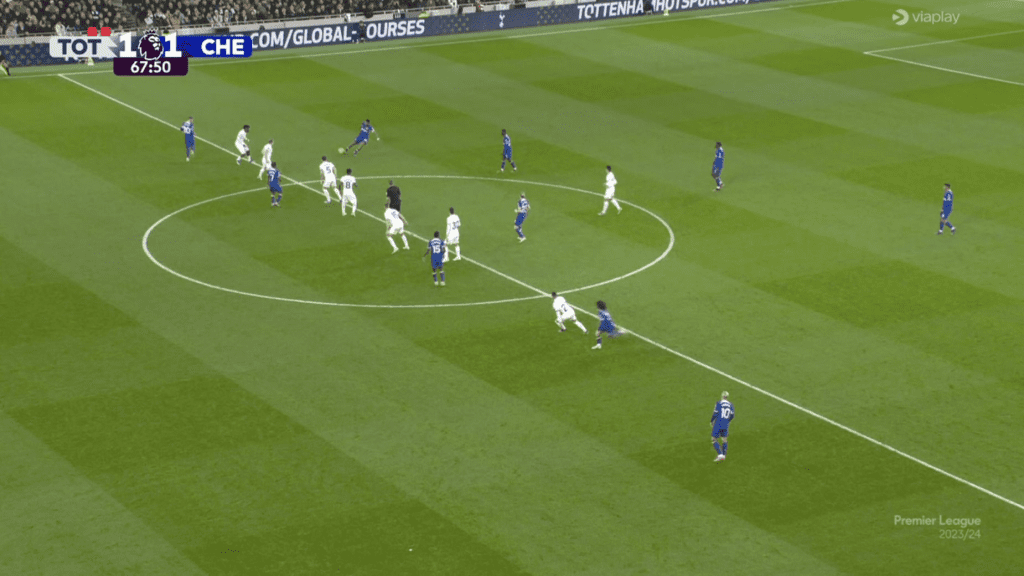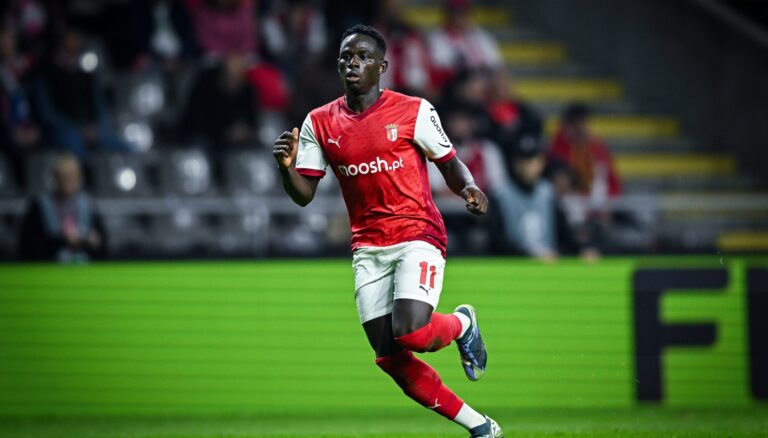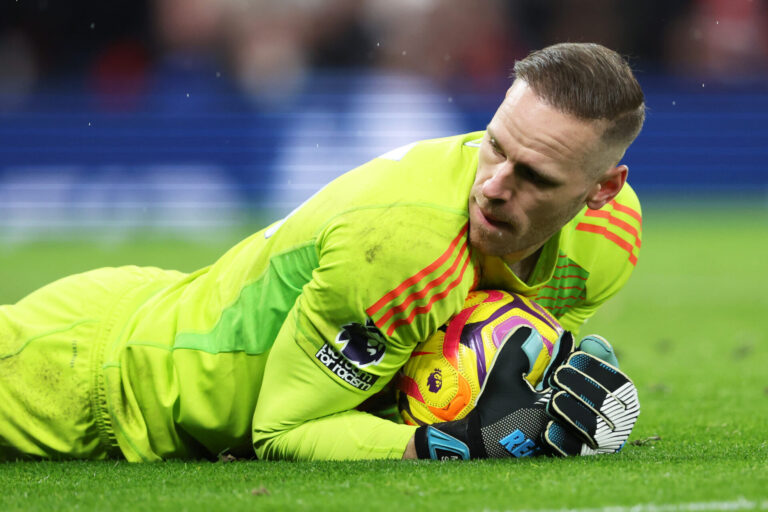The 5 Weirdest Tactical Decisions In Premier League History
Over the 32 Premier League seasons since the breakaway in 1992, there have been some genius tactical decisions made by some of the world’s greatest managers. We’ve seen some of the greatest performances the football world has had to offer, but we’ve also seen some of the craziest things too.
Today we are going to look into five of the strangest tactical tweaks made over the years, from David James up front to Phil Jones taking corners and much more. This is the Five Wackiest Tactical Tweaks in the history of the Premier League, which left fans questioning whether their managers had lost the plot, or unearthed a poor genius plan
5. Romelu Lukaku starts on the right wing against Arsenal

In April of 2014, Everton welcomed Arsenal to Goodison Park, with both teams in the hunt to secure European football for the following season. However, few would have expected 6’3 centre-forward Romelu Lukaku to be playing on the right wing.
This turned out to be a brilliant idea from Roberto Martinez, as it allowed the Toffees to fire long balls up to the Belgian, who was always going to have the beating of Arsenal full-back Nacho Monreal when it came to an ariel battle. Lukaku would often either knock the ball down for Ross Barkley in midfield or attacking partner Steven Naismith. It wasn’t long before Everton took the lead off the back of this, either, when Naismith fired home their first goal of the game just 14 minutes in. Lukaku would double their advantage just 20 minutes later, before a second-half own goal from Mikel Arteta sealed a 3-0 win for Everton and kept their Champions League aspirations alive.
4. Marcelo Bielsa: Tactical Murderball

Mastermind or Mad Hatter? Marcelo Bielsa’s time at Leeds was a wild ride, as it saw them lose a Championship play-off final, win the league the year after, secure a top-half Premier League finish, and eventually see them scrape survival on the final day of the 2021/22 season under Jesse Marsch after Bielsa was relieved of his duties partway through the season.
Often utilising different systems in his build-up play, Bielsa’s Leeds could switch between a four and three back throughout games depending on situations and the opposing team’s approach to the match. When playing a three-back system, which was often the Argentine’s preferred style, the two wide centre-backs would start the build-up play from the defence. In this system, the team would completely neglect playing through the middle of the park. The wide centre-backs were often instructed to drive the ball forward while the wing-back pushed up and the central midfielder dropped deep and wide to support him and cover defensively should they lose the ball.
Bielsa’s “Murderball” training sessions also became legendary during his time in Yorkshire as something never seen by England before. Murderball was a training game where the squad would divide into two teams and play an in-house game of football where the ball was continuously in play and there were also no fouls. Due to its high intensity, the Leeds team named it Murderball.
“It’s 11 v 11 on a full-sized pitch and every player has his cone. As soon as the ball goes out of play, wherever you are, you sprint back to your cone. Then the ball is chucked in somewhere and you go again.”
When asked about it in a 2021 interview with the Daily Mail Patrick Bamford said
This sort of high-intensity football translated perfectly into competitive matches for Leeds, as they constantly out-pressed, out-ran, and generally outclassed teams throughout the majority of Bielsa’s reign at Elland Road.
3. Bend it like…Phil Jones?

In a 2015 Premier League clash against QPR at Loftus Road, Manchester United manager Louis Van Gaal opted for lumbering central defender Phil Jones to be the side’s designated corner-taker for the match in a move that confused almost everyone. In the Red Devils’ XI that day were established set-piece takers such as Wayne Rooney, Juan Mata, Angel Di Maria, and Antonio Valencia, so why Phil Jones took the corners remains a mystery.
United did eventually win the game 2-0, but it won’t surprise you to learn neither goal came from a Phil Jones delivery; in fact, most of his balls didn’t make it past the first man. LVG was fairly well-known for making strange tactical decisions at times, including once playing Marouane Fellaini as a winger, Wayne Rooney in midfield and Marcus Rashford at full-back
2. Spurs Derby Day high line with nine men

Ange Postecoglu has become known recently for his incredibly high defensive line and pressing football, however, not changing that system when Spurs went down to nine, yes, NINE men, against Chelsea earlier this season may not have been the smartest idea. Spurs took an early lead through Dejan Kulusevski before Chelsea had two disallowed in quick succession. After 33 minutes, though, it started to fall apart for Spurs as Cristian Romero saw red following a bad challenge on Enzo Fernandez, resulting in a penalty and subsequent equaliser for Chelsea. The teams went in level at the break, but with five bookings between the sides, you’d have been silly to think the second half would be a dull one.
Just ten minutes into the second half, Spurs full-back Destiny Udogie was given a second yellow card, meaning Spurs were down to nine. Despite their ridiculously high line, the North London side held out for another 20 minutes before Nicolas Jackson put Chelsea ahead. This led to a classic “opening of the floodgates” as Spurs pushed for an equaliser and Jackson scored two more in injury time to complete his hat-trick and give Chelsea an astonishing 4-1 win at the Tottenham Hotspur Stadium.
1. David James Up Front

On the final day of the 2005–06 season, Manchester City needed a win over Middlesbrough to secure a UEFA Cup spot for the following season. Approaching stoppage time, the score was level at 1-1, so naturally City manager Stuart Pearce made a change to try and steal a late winner; however, most did not expect to see second-choice goalkeeper Nicky Weaver limbering up on the touchline, especially not to replace Claudio Reyna.
What followed was perhaps the strangest tactical decision in Premier League history as David James moved outfield and took up the role of centre-forward. City would go on to win an injury-time penalty due to the defensive confusion caused by having James in the attack, but unfortunately for them, Robbie Fowler would miss it, thus ending their European hopes for that season.
Read More: Attacking Football:
- Who Is Amad Diallo? Unravelling The Story Of Manchester United’s Rising Star
- My Tactical Sunday: Chelsea vs Manchester City
- The Problem With Erik ten Hag
- How Many People Play Fantasy Premier League (FPL)?
- Kaide Gordon: What Has Happened With Liverpool’s Promising Star?









One Comment